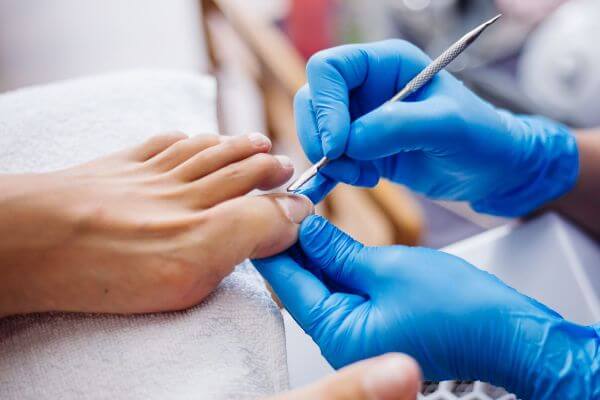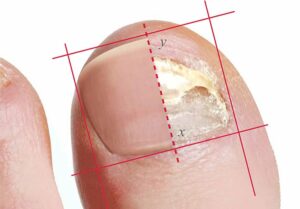Welcome to Vargas Foot Specialists, your trusted destination for comprehensive foot health solutions. If you’re seeking answers on where to have an ingrown toenail removed, you’re in the right place. At Vargas Foot Specialists, we specialize in expert care services for ingrown toenails. In this guide, we’ll walk you through ingrown toenail removal procedures, recovery, and associated costs.
Understanding Ingrown Toenails
Medically termed onychocryptosis, ingrown toenails occur when the edge of a toenail grows into the surrounding skin, causing pain, inflammation, and sometimes infection. They’re more common among individuals who wear tight shoes, engage in rigorous activities, or don’t trim their nails correctly.
Types of Procedures
At Vargas Foot Specialists- Sugar land , we offer safe and effective ingrown toenail treatment through two primary methods:
Partial Nail Avulsion
This outpatient procedure involves numbing the affected toe and removing a portion of the ingrown nail, promoting quicker healing and reduced discomfort.
Total Nail Avulsion
Reserved for chronic or recurrent cases, this procedure involves complete toenail removal, offering long-term relief from ingrown toenail issues.
Recovery
Following ingrown toenail removal, diligent post-operative care is crucial. Maintain cleanliness and dryness, follow bandaging and wound care instructions, manage pain with prescribed medications, and elevate your foot to reduce swelling.
Immediate Post-Procedure Care
After the removal procedure, it’s essential to keep the area clean and dry. Our podiatrist will likely provide specific instructions for bandaging and wound care. Remember to take any prescribed pain medications as directed.
Pain Management
Pain after ingrown toenail removal is common, but it’s usually manageable. You can alleviate discomfort by elevating your foot, applying ice, and avoiding tight shoes. Over-the-counter pain relievers can also help. If pain persists or worsens, contact your podiatrist.
Dressings and Bandages
Our team will apply appropriate dressings and bandages to protect the surgical site. Keeping these clean and dry is crucial to prevent infection.
Soaking your foot in warm, soapy water as recommended can help in healing and reduce swelling. Be sure to follow the prescribed frequency and duration of soaking.
Foot Elevation
Elevating your foot above heart level using pillows can help minimize swelling and promote faster healing during your recovery.
Ingrown Toenail Removal Recovery
The recovery period varies from person to person but typically takes a few weeks. During this time, you should be cautious with your activities to avoid complications. It’s crucial to follow your podiatrist’s instructions closely to ensure a smooth recovery.
How much does it cost to remove an ingrown toenail?
Now, let’s address the financial aspect of ingrown toenail removal. The cost can vary depending on factors such as the type of procedure, the geographical location of the clinic, and whether you have insurance coverage.
The good news is that many insurance plans cover ingrown toenail removal, especially when it’s deemed medically necessary. Be sure to check with your insurance provider to understand your coverage.
For those without insurance or with high deductibles, the cost of partial nail avulsion can range from $200 to $500, while total nail avulsion may cost between $300 and $800. Keep in mind that these are approximate figures and can vary.
FAQs
How long does the ingrown toenail removal procedure take?
The procedure typically takes about 30 minutes to an hour, depending on the complexity.
Is ingrown toenail removal painful?
The procedure is performed under local anesthesia, so you shouldn’t feel pain during it. But, some discomfort and mild pain may occur during the recovery period.
Can I walk at once after the procedure?
You may be able to walk with caution at once after the procedure, but it’s advisable to limit activity for a few days to help in healing.
Are there any complications associated with ingrown toenail removal?
Complications are rare but can include infection or regrowth of the nail. Following post-operative care instructions reduces these risks.
When should I seek medical attention after the procedure?
If you notice signs of infection, severe pain, or excessive bleeding, contact your podiatrist at once.
To sum up, ingrown toenail removal is a common and effective solution for the discomfort and pain caused by ingrown toenails. At Vargas Foot and Ankle Specialists, we are dedicated to providing you with expert care throughout the whole process. Remember that proper post-procedure care and following your podiatrist’s advice are essential for a smooth recovery.
If you’re wondering “where to get an ingrown toenail removed,” look no further than Vargas Foot and Ankle Specialists. Contact us today to schedule an appointment and take the first step toward healthy, pain-free feet.
Don’t let ingrown toenails hold you back—trust the experts at Vargas Foot and Ankle Specialists for all your foot health needs.
To Healthy Feet,
Dr. Marco Vargas, DPM, FACFAS
Disclaimer: The information provided in this article is for informational purposes only and should not be considered medical advice. Please consult with a qualified healthcare professional for personalized guidance on your specific condition
















